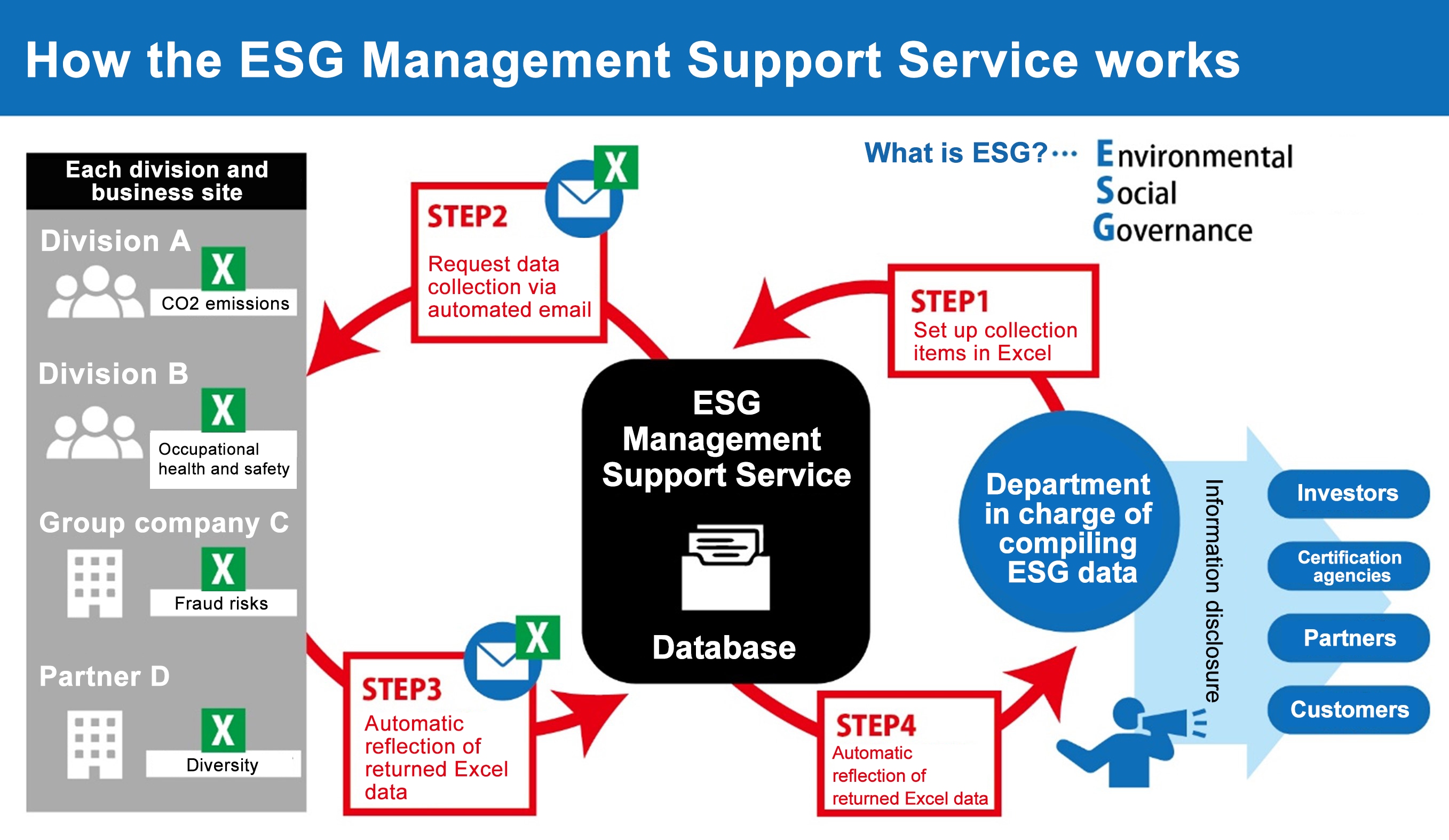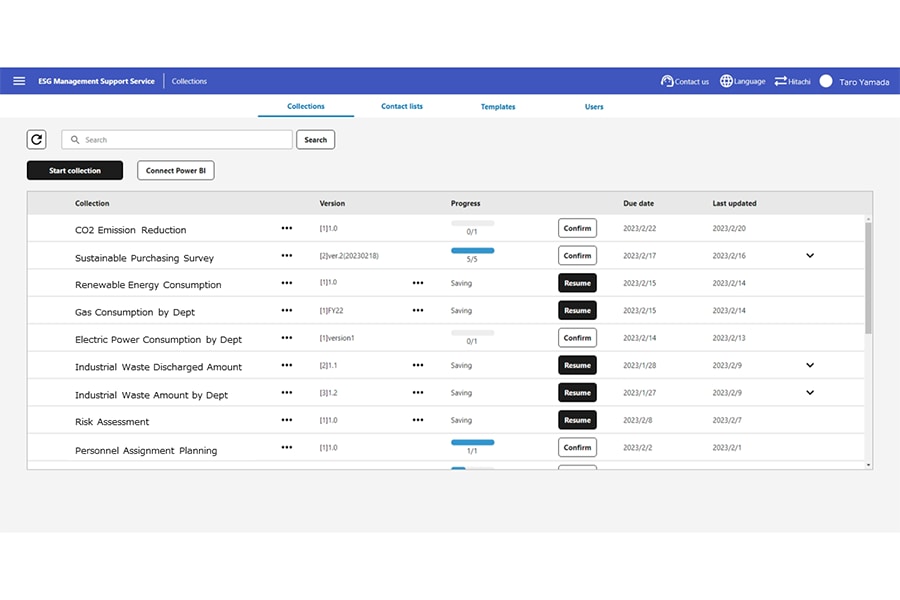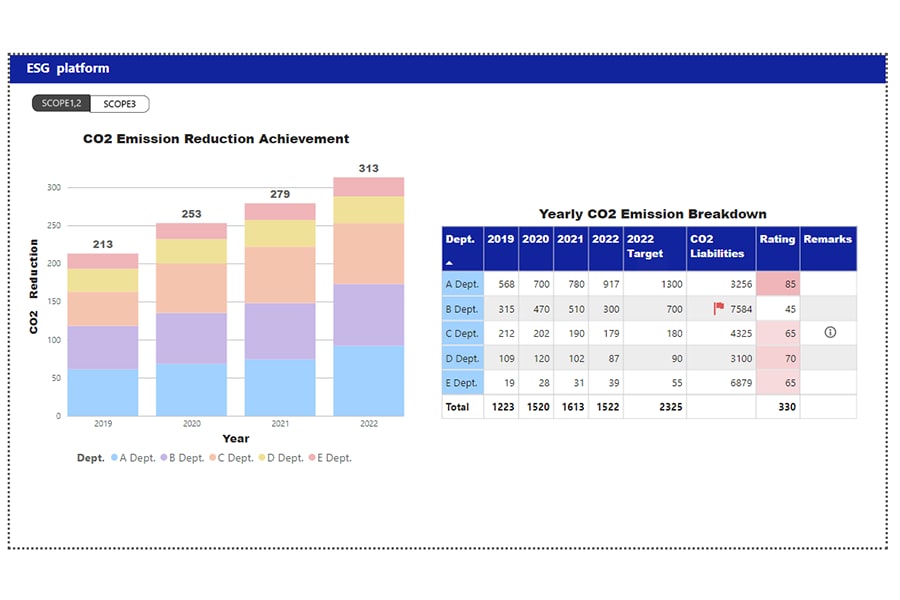Hitachi has unveiled the next generation of the OASIS™
Streamlining the Collection and Visualization of ESG Data: What Hitachi Service is Pursuing Usability?

In recent years, a term that has become more and more common in news related to corporations is “ESG,” which is an acronym for “Environmental, Social, and Governance,” and corporations are required to appropriately disclose ESG-related information, such is the importance that institutional investors place on it when considering where to invest.
One of the major challenges in disclosing said information is the task of collecting and visualizing various ESG data scattered throughout a company. To address this issue, Hitachi developed the ESG Management Support Service, a system that streamlines the collection, analysis, and visualization of decentralized ESG data, launching it in September 2022. The design concept behind the system was based on a "thorough on-site point-of-view."
No need to stop using Excel

To manage information on CO2 emissions, occupational health and safety, fraud risks, and other ESG-related information on a company-wide basis, the department in charge of compiling ESG data usually asks each division and business site to collect the data. However, ESG data is often managed and collected manually using spreadsheet and other software, making it burdensome for employees to compile and check the accuracy of the data.
Another issue is that, when changes occur in the ESG data to be collected, it is a huge amount of work to make the changes. Thus, the ESG Management Support Service solves these inefficient and work-intensive issues.
The service is easy to use: First, the department in charge of compiling ESG data specifies the ESG data that it wants to collect in the service. Next, the service sends a collection request to each department and business site that has ESG data, and an e-mail with an Excel file attached for response is automatically sent to each site.

The person in charge on-site enters the necessary data into the Excel file and returns it via e-mail. The information in the Excel file is then automatically reflected in the service's database. By subsequently connecting business intelligence (BI) tools to the database, ESG data can be easily visualized and analyzed.
Yosuke Takahashi, product manager for this service, says: “We created this service from a thorough on-site point-of-view.”
He continued: “At the on-site level at many companies, e-mail and Excel are still major work tools. With this service, on-site staff only need to deal with the tools they are used to, Excel and e-mail, and there is no need for them to learn how to use difficult systems and tools.”

Collecting ESG data: Labor intensive
Takahashi has been looking at developing the ESG Management Support Service since around 2018. He talks about what prompted him to begin considering the idea at that time as follows:
“The worldwide media had criticized corporate activities that ignore ESG issues such as hiring workers at unreasonably low wages and making profits by selling products that have negative impact on the environment. Therefore, I wanted to make sure that corporate activities that place importance on ESG are evaluated, so I decided to create a system to visualize such activities.”

Although development moved forward, at the time the term "ESG" was not widely known, and Takahashi recalls: “Even though it was said to be important from the perspective of investors and management, its importance had not yet been properly conveyed to the field.”
“We felt that we needed to answer such questions as, 'We’re already so busy with other work, so why do we have to collect ESG data?’ Hence, while developing the prototype, we conducted interviews with on-site employees to make improvements to the product.”
A 34% reduction in hours worked
Prior to the launch of the ESG Management Support Service, Hitachi Construction Machinery, a major construction equipment manufacturer, conducted proof-of-concept testing using the service in an effort to efficiently collect data on occupational safety.
As a result, the company succeeded in reducing the work-hours required to collect ESG data related to risk assessment by approximately 34%. The company says that it is now able to disclose information more easily than ever before, and the collected information is graphed and shared with workplaces, enabling them to enact safety measures from a broader perspective.
The sites that were involved in the proof-of-concept testing also responded that the system was “convenient to use” and “seems to make the work site safer.”

In addition to occupational health and safety, the service is also expected to be used for environmental issues, such as aggregating CO2 emissions, and human rights issues, such as forced labor and traceability of conflict minerals.
“Companies that aim to create a society that continues to generate positive benefits for humans will be properly evaluated, and the people that contribute will be happy. This is the kind of worldview that we are aiming for with this service,” stated Takahashi.



